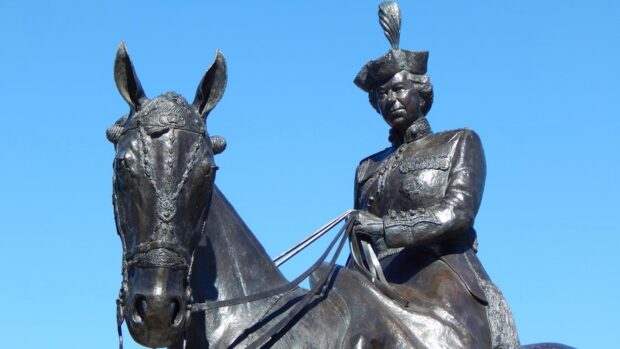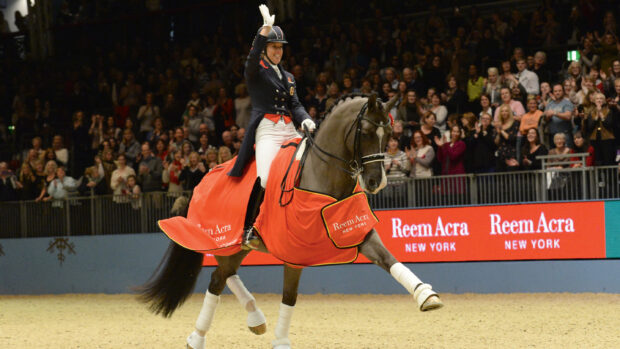Research looking into the rehabilitation of chronic sacroiliac pain in horses has provided an insight into owners’ experiences of the rehab journey.
The British Equestrian Trade Association’s (BETA) thesis of the year, Owner satisfaction with rehabilitation practices for chronic sacroiliac pain in equines in the UK since the year 2000 – by Writtle University College equine sports therapy and rehabilitation graduate Isabelle Anderson – aimed to give an indication of the diagnostic and rehabilitation methods for chronic sacroiliac dysfunction within the general UK horse population and look at the involvement of owners and paraprofessionals during rehab.
The owners of 44 horses, which had been diagnosed by vets with chronic sacroiliac pain, completed an online survey, which included questions on diagnosis and treatment, rehab plan and outcome, together with their experience of the working relationship between their vet and paraprofessional.
Of the respondents, 93.2% involved a paraprofessional to aid their horse’s rehab, the most popular of which was veterinary physiotherapists, at 47.7%. Almost half, 48%, of owners considered that their vet and paraprofessional had a good relationship, 27% a poor relationship and 25% no relationship at all. More than half, 56.8%, of owners rated the rehab instructions as extremely clear and 36.4% understood the goal of exercises given extremely well. But of the participants’ horses who completed their rehabilitation, 55.3% of cases were deemed unsuccessful.
Ms Anderson told H&H she chose the topic for her thesis as the sacroiliac joint is a difficult part of anatomy to study, owing to its location deep in the horse’s pelvis, and she felt there was a gap in research around owner involvement in rehabilitation.
“On the whole, owners were really satisfied with their horses’ rehabilitation journeys, but what stood out for me was that more than 50% of cases were considered unsuccessful rehabilitation, which is a real shame,” she said. “Sacroiliac issues can be really hard to diagnose – sometimes it can be that owners notice something isn’t quite right, but don’t see a prolific lameness and vets aren’t involved until later.”
Ms Anderson added that the study revealed “variable collaboration” between owners, vets and paraprofessionals.
“Further and larger studies into veterinary-client-paraprofessional relationships could improve equine rehabilitation and welfare by highlighting communication barriers and challenges,” she said.
British Equine Veterinary Association president Huw Griffiths agreed that in some horses sacroiliac disease is “relatively difficult” to diagnose, image and treat.
“This study makes some interesting points from the past 20 years, regarding the impact of veterinary-client-paraprofessional relationships and the usefulness or otherwise of some rehabilitation techniques,” he told H&H.
The BETA thesis judging panel comprised research consultant Georgina Crossman with equine nutritionist Katie Williams, vet Karen Coumbe and Equestrian Trade News editor Liz Benwell. The runner-up thesis was The effect of different water depths on the activity of the equine longissimus dorsi muscle while walking on a water treadmill, by Harper Adams University graduate Isabel Badham.
“The standard of dissertations submitted this year was very high, and the finalists really brought their research to life through their presentations,” said Dr Crossman.
“Isabelle’s dissertation was well structured with a clear research method and her presentation highlighted the need for shared decision making when considering horses with chronic sacroiliac pain.”
Entries for the BETA equine thesis of the year are open for 2022. UK and Irish universities and colleges offering equine-related degrees are invited to submit one entry each.
You might also be interested in:

Concerns over showing judges’ ability to identify overweight and obese horses

‘They don’t go to hospital unless something’s hanging off’: research shines light on equestrian-related injuries

5 reasons why a subscription to HorseandHound.co.uk makes the perfect last-minute gift
Horse & Hound magazine, out every Thursday, is packed with all the latest news and reports, as well as interviews, specials, nostalgia, vet and training advice. Find how you can enjoy the magazine delivered to your door every week, plus options to upgrade your subscription to access our online service that brings you breaking news and reports as well as other benefits.




